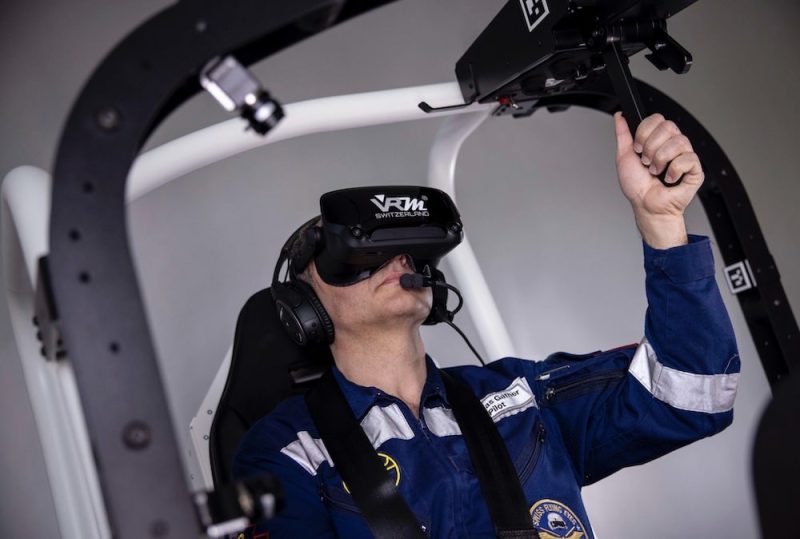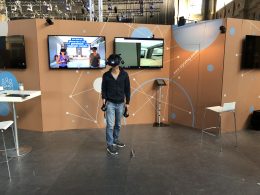Flight training with the aid of virtual reality : EASA has now approved the first such simulator in accordance with FNPT II. It allows cost-effective and efficient training, especially in dangerous situations.
The European Union Aviation Safety Agency (EASA) has approved a first training device based on a virtual reality representation for training flying crews. The Flight Simulation Training Device (FSTD) from the Swiss company VRMotion AG (VRM Switzerland) from Schaffhausen is initially intended for use in training for helicopter crews.
The pilot wears VR goggles and sits in a frame with the dimensions of the cockpit of the real helicopter. Stick, pedals, collectives and instrument panel are also present. The pilot sees a virtual image of the cockpit and the surroundings in the data goggles. This enables cost-effective and efficient flight training. Critical flight situations can also be simulated safely.

EASA has convinced itself of the suitability of the training device and its characteristics with the help of an evaluation programme. As part of this process, pilots from industry, authorities, flight instructors and test pilots flew with the Virtual Reality FSTD. They confirmed that the VR simulator delivers what it promises. The VRM Switzerland training device was particularly convincing in autorotations, hover manoeuvres and landings on slopes.
Approval for R22 training
As this is a completely new training device with a new concept, EASA had to adapt its certification requirements. It defined special conditions that take into account the characteristics of the new training device. The FSTD is now certified as FNPT (Flight Navigation Procedures Trainer) Level II for the Robinson R22 Beta II.
Jesper Rasmussen, EASA Flight Standards Director, said: "This is an important milestone in the development of flight simulation training devices. The Agency is modernising its regulations for training devices to reflect their actual performance and technological progress. This development will allow for a broader range of cost-effective training devices to complement full flight simulators and is driven in part by training needs for new VTOL flight devices. This is also in line with the EASA Rotorcraft Safety Roadmap safety objectives to review the most critical training scenarios and encourage the use of simulators in areas of high risk training."
Source: aerobuzz









